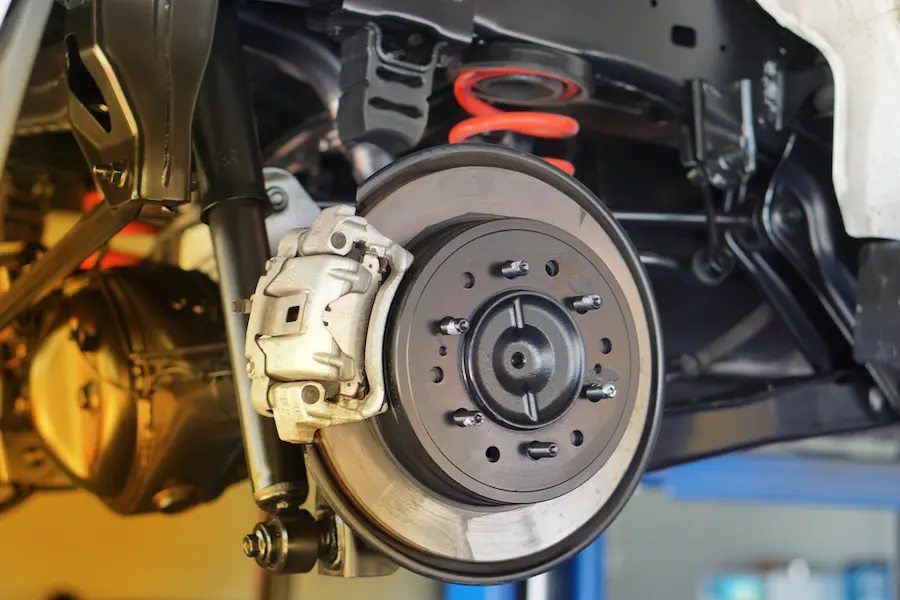Today, we’re going to embark on an enlightening journey into the world of car braking systems. You might think of your car’s brakes as just a pedal under your foot, but there’s so much more to it. Let’s brake down (pun intended!) the complexities and understand why they’re a crucial component of automobile safety.
Table of Contents
The Evolution of Braking Systems – From Drums to Discs
A Trip Down Memory Lane
Initially, cars used drum brakes, which were effective but had limitations, especially under wet conditions or during prolonged use. Over time, disc brakes started gaining popularity. They dissipate heat more efficiently and offer superior stopping power, especially in emergency situations.
Modern Marvels of Braking Technology
Nowadays, most vehicles feature disc brakes, at least on the front wheels. These consist of a rotor, a caliper, and brake pads. When you press the brake pedal, hydraulic fluid causes the caliper to press the brake pads against the rotor, slowing down your car with remarkable efficiency.
Understanding Hydraulic Brake Systems – The Power Behind Your Pedal
How It Works: A Closer Look
The hydraulic brake system is a marvel of engineering. When you press the brake pedal, a piston in the master cylinder forces brake fluid through a series of tubes and hoses to the braking units at each wheel.
The Importance of Brake Fluid
The brake fluid plays a pivotal role. It must withstand high temperatures and not compress under pressure, ensuring a responsive and reliable braking experience. Regularly checking and changing your brake fluid is crucial for maintaining the system’s integrity.
Anti-lock Braking Systems (ABS) – A Modern Safety Net
ABS: Preventing Wheel Lock-up
Anti-lock Braking Systems, commonly known as ABS, have been a game-changer in automotive safety. ABS prevents the wheels from locking up during emergency braking, allowing you to maintain steering control.
The Science Behind ABS
ABS employs speed sensors and a control unit to modulate the braking pressure, ensuring maximum stopping power without sacrificing control. It’s particularly useful in slippery conditions, reducing the risk of skidding and accidents.
Electronic Brakeforce Distribution (EBD) – Balancing Act on the Road
EBD Explained
Electronic Brakeforce Distribution is an advanced system that works alongside ABS. It automatically varies the amount of force applied to each brake, based on road conditions, speed, and loading.
Why EBD Matters
EBD ensures that each wheel receives just the right amount of braking force, enhancing vehicle stability and safety during deceleration. It’s especially helpful in preventing rear-end skids and maintaining control during sharp braking maneuvers.
The Role of Brake Pads – Where Friction Meets Function
The Unsung Heroes: Brake Pads
Brake pads are the frictional material that press against the rotors. They’re crucial for the braking process, converting the kinetic energy of the car into thermal energy by friction.
Choosing the Right Brake Pads
There are various types of brake pads, including organic, semi-metallic, and ceramic. Each type has its own advantages, suited for different driving conditions and vehicle types. Selecting the right brake pads can significantly affect your braking performance and comfort. For a detailed look at different brake pad options, “allrotors.com” offers a comprehensive guide that can help you make an informed decision.
Brake Rotors – The Spinning Heart of the Braking System
Understanding Brake Rotors
Rotors are the discs that your brake pads clamp down on. They play a vital role in bringing your vehicle to a stop.
Types and Maintenance
There are different types of rotors, such as drilled, slotted, and smooth. Each type has its own benefits and ideal use cases. Regular inspection and maintenance of your rotors are crucial for ensuring effective braking and prolonging the life of your brake system.
Regenerative Braking in Electric and Hybrid Vehicles – The Future of Braking
A New Era of Braking
Regenerative braking is a revolutionary technology predominantly found in electric and hybrid vehicles. It recaptures energy typically lost during braking and uses it to recharge the battery.
How Regenerative Braking Works
When you apply the brakes in an electric or hybrid car, the electric motor runs in reverse, acting as a generator. This not only slows the vehicle down but also converts some of the kinetic energy back into electrical energy, stored in the battery. It’s an ingenious way to enhance efficiency and range.
Maintaining Your Car’s Braking System – Tips and Tricks
Regular Check-Ups
Routine maintenance of your braking system is essential. This includes checking the brake pads, rotors, fluid, and the overall functionality of your system.
DIY Maintenance Tips
Simple tasks like checking brake fluid levels and inspecting brake pads for wear can be done at home. However, for more complex issues, it’s advisable to consult a professional mechanic to ensure your safety on the road.
Understanding the Costs – Budgeting for Brake Maintenance
Budgeting for Safety
Maintaining your car’s braking system is an investment in your safety. The cost can vary based on your vehicle type, the quality of materials, and labor charges.
Cost-Effective Maintenance
While you shouldn’t skimp on safety, there are ways to manage the costs effectively. Choosing the right parts and staying on top of routine maintenance can help prevent more expensive repairs down the line.

